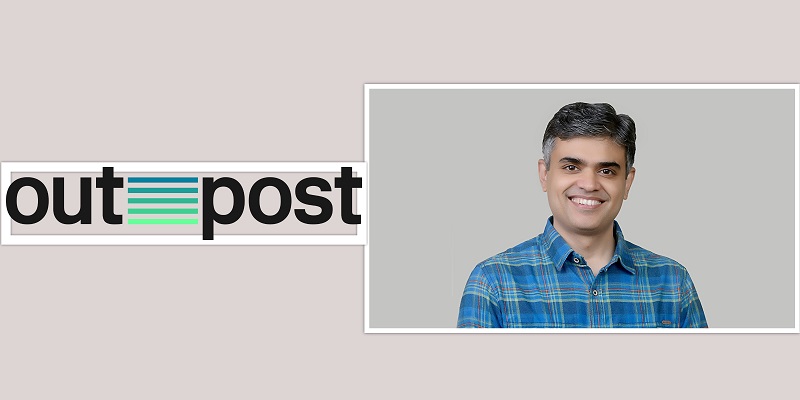
UK-based visual effects organisation Outpost VFX, that will soon open its door in Mumbai, their first Indian facility, has Syamantak Thakur on board as the general manager. Thakur has joined Outpost from Technicolor where he was the department management head, having previously spent five years as TRACE VFX GM.
“We’re looking at getting fully set up around the end of the third quarter in our facility which will be located in the western suburbs, which puts us in the middle of things. There’s an existing community in that region, and we’re looking forward to being surrounded by like-minded people, while remaining in an accessible location. Our facility will have a 300-seat capacity – we’re looking forward to sharing more information with everyone soon. As for now, we’re fully set up as a remote studio with 80 artists already working on some incredible work,” Thakur mentioned about the upcoming office.
The new setup brings Outpost’s unique culture and benefits to India. There are a number of benefits that the company will bring here.
“We’ve got a number of benefits and values we’re really proud of at Outpost which we’re looking forward to bringing to the area. For example, our Life Time policy of uncapped leave will really make a difference to our artists. In my experience, at some point an artist will ask for unpaid leave, possibly to deal with something critical or an emergency and in those situations, while studios may allow people to go, it will often be unpaid and it’s no help if you’re already in some kind of stressful situation to have your finances reduced. So by offering our uncapped holiday, we’re allowing our artists the freedom to take time when they need it and not have to make difficult decisions or sacrifice anything,” he said.
The GM further mentioned, “Another policy we’re excited to bring to the area is our overtime policy. We know that in this business there will be times where working hours will be extended, but we want our artists to be compensated for that. Almost all of our artists have now moved over to our payroll contracts, and very few remain as freelancers.”
Thakur pointed out their integrated pipeline helps in smooth knowledge transfer and maintain a thriving work culture.
“Our artists will be working from one integrated pipeline with all other sites. This makes a huge difference because when we’re not siloed out – which is often the case in other Indian studios – our artists can see how the studio is working globally, and they’re interacting and collaborating with their teammates as one. Not only does this make for a more enjoyable and inclusive experience for our artists, it also usually produces a greater understanding of the pipeline and allows more room for growth and progression,” he said.
Sharing how they ensure that there are no gaps in collaborating with the international counterparts, he said, “We want our artists to know that Outpost is Outpost no matter where you are, and I think other studios, even the bigger studios, have trouble trying to bring that feeling in. There’s still a feeling within the global studios that the India team is an outsource team and they get treated like a vendor rather than an extension of the other studios, and that becomes challenging at some point because the knowledge transition is not smooth enough. So at Outpost we’re working on closing that gap entirely and working together collaboratively and efficiently.”
Outpost VFX Mumbai seeks to create an environment where everyone feels respected, that they are being heard and that their contribution matters. It doesn’t matter what department they are working in; every single person is helping us to add value to the projects we are building.
“We also want to create an environment that inspires artists to continue to grow. We’re building a budget for training both internally and externally, so that we can upskill people and allow them to develop not only the technical skills but also the soft skills needed to thrive in this industry. There will be room for artists to experience other departments and grow where their passion lies. There will be a close relationship between our Indian artists and artists from the other Outpost studio sites, and we are anticipating VFX supervisors from our LA, UK, and Montreal sites to visit and spend some time here to get to know the Indian team personally and run training sessions,” Thakur said.
According to Thakur, people in the Indian VFX industry are looking for the same level of exposure that artists in other countries get. They’re not getting into the industry to only do the laborious tasks; they also want a say in the creative decision-making.
“We have seen some really positive change over recent years. I think we’ve seen a transition from the initial stages of the industry here where a lot of people were just venturing into the field and there wasn’t much complex work coming into India. Now, and over the last couple of years, a lot of the bigger projects have been largely produced in the Indian studios. Take The Jungle Book and The Lion King for example, a lot of the back-end work was primarily done in India.
“While there is still a bit of reluctance in sharing the creative work with India, this too is slowly starting to shift. Studios in the west have started to gain trust and realise that quality work can be done here. They’ve started relying on the talent in India and are slowly giving more and more complex work to our studios. Projects that are creatively more demanding have started coming in, and that’s a great development for the industry here,” he mentioned.
Before getting into this field, Thakur worked in operations for the data and software industry for 18 years. His role here was focusing on leading teams and improving efficiency and productivity. A lot of his job involved understanding industry policy and using these to the business’ advantage.
Thakur’s experience in the Indian VFX space so far has spread across the gradual changes that are taking place. Already all are seeing a change in perspective from people coming into the industry; there are newer people who are coming onboard and with different aspirations and perception of the VFX world which is great. Some people who are of the older generation who have been through the rougher times of the industry are ready to move on and do something different. Now it feels like the next generations of artists are looking forward to a better future in the industry.
Talking about VFX training here, he said, “The training institutions are doing a great job at attracting and exposing the younger generations to what is happening in the industry, what the requirements are and showcasing all the great work that’s taking place over here now, so their initial perception of the industry is much more positive.
“A few years ago, I attended some open conferences for kids and parents to learn about the industry and the questions you’d get from the parents were surprising because they really had no idea about the industry and their future prospects. But now, education on that front has really helped – a lot of parents are being more supportive of their children getting into the industry. I think we have some way to go before we can say that it is a popular career choice, but it’s moving in the right direction. People are realising that you don’t have to become an engineer or a doctor, that this is a viable option and you can still make money.”
Further, he mentioned that people are realising that it’s OK to say no to work if it can’t be done; that it’s OK to be upfront if client expectations can’t be met. That was a clear taboo before now, you couldn’t say no to anything. Instead, you’d say yes and struggle. And that leads to other things happening like people spending huge amounts of time in the studio and studios really stretching their Indian team. But this has now started to change; studios are respecting their artists’ personal time and allowing them to take time off.
“It’s also becoming a much more organised sector than before. There are companies that have now started establishing certain policies, certain benchmarks for how they hire and engage with their teams. It’s great because we can start to see a cultural shift within the industry; certain things have now become acceptable and other things have become unacceptable. That’s really helping the industry to grow and attract more talent. We’re seeing more people picking up jobs in VFX now not because they simply need a job, but because they have a genuine interest and are looking forward to building a career in VFX,” Thakur said.
Asked about his thoughts on India having a positive impact in continued growth of the global VFX community, he shared, “I think we have an excellent opportunity in terms of the amount of people that are getting into the industry and are being trained on an annual basis. When we take this into consideration, it’s clear that there’s the capacity here for India to do a lot of work. Globally, we’re only doing a fraction of the work that is available, even today. So when we look at the industry itself, I think it has the potential to grow manyfold. I think we could double the work in a short amount of time if we’re able to tap into the talent pool that exists throughout the country.”
He further added, “People are still concentrated in different areas across India in places such as Mumbai, Bengaluru, and Chennai, so it’s primarily very centralised towards the middle and southern states. In the northern suburbs there are very few studios, so I think there is a lot of talent out there that is trying to reach out, so if we’re able to tap into that we’ll be able to grow even further.”
He concluded by saying, “The quality of the artists in India has gone up, and people have now spent decades in the industry meaning we’ve got the industry experience and knowledge to train others. I feel we’ve hit critical mass where we can now grow exponentially, and we can get people trained in the right way with skills that are on par with any other artists across the globe.”



